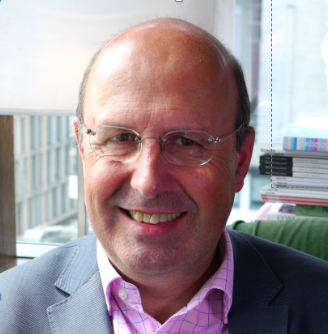You can sign up to our LinkedIn newsletter here.
In the first part we talked about the 4 things that are going to position you most powerfully to deliver an impact on your clients. In this second part, we’ll look at how you go forward to engage with clients.
5. Build trust with your potential buyers as clients
You need to establish your credibility and visibility and start initial conversations with a small number of potential clients. You need to be able to take control of the buying process and find the clients you want to work with. A crucial part of this is about extending your awareness in the market by writing articles to demonstrate your expertise. I recommend you look at an article of between 800 – 1200 words and to kick off, you build a series based around 10 things and then they are posted as LinkedIn articles.
The 10 things might be:
- 10 things I wish I knew when I started as …, or
- 10 things I learned from being a …, or
- 10 things that will help a CEO to transform ….
This will give you stories for your regular posts. Then I recommend that you invest in the Sales Navigator add-on to your basic LinkedIn subscription. This will allow you to identify first and second level connections for organisations you would like to engage with that match the criteria you established in the very first step we talked about. Find 10 CEOs from that list, who look like candidate customers and create structured conversations starters for those CEOs.
Now you need to move on to the engagement process.
6. Start to build relationships that will bear fruit in the short and the medium term
I have found the most powerful way to get started is to establish a clear strategy for networking and enabling people to buy.
- The first thing is to use your existing network and ask for advice on how you can approach people who could use your services.
- The second thing is to start networking with people you do not directly know, using networking groups, local enterprise partnerships or universities and in particular, LinkedIn, to get introductions to the people you want to have a conversation with.
Once you’ve got to the point that a conversation is possible, set up an initial 30 minute call to see if your potential clients have problems you could help with. If you can help then book a second longer exploration and conversation. This is when you dig down into the impact of the challenges they face and how it limits the success of their organisation. Now you can propose the diagnostic we defined earlier.
Once you’ve been able to get your first client, the next step is to move from the initial diagnostic.
7. Becoming the long-term trusted advisor
It is long-term, sustainable client relationships which will enable you to build your portfolio and retain clients, on average, for around 5 years.
You need to learn how to build the right relationship with the CEO and the other key stakeholders. If you are a finance director, then you will need to have a relationship with the CEO, but also with the people who are running the primary cost centres in the organisation and the people responsible for sales. You will need to constantly affirm how the changes you are making improve shareholder value.
You also need to maintain a dialogue about what is important to the CEO. As a trusted advisor you need to bring a perspective beyond the immediate horizon. You should champion the balance between the short, medium and the long term.
Finally, you need to navigate the half-in, half-out relationship that you have as somebody who is a member of the executive team, but who is emotionally arm’s length. You should be delegating activity that is below your pay grade and focusing on building capability rather than fixing issues. This means you have to learning how to lead through influence, not position. This involve adopting a coaching and mentoring style as your primary form of engagement.
8. Building and sustaining a portfolio of clients
A successful, long-term, sustainable and rewarding portfolio is achieved by transitioning from one client to a portfolio of part-time roles. Without this you will fail to feel in control of your working life. You will fail to fully embody the trusted advisor role and you won’t have the resilience that multiple clients offer you.
You need to learn how to embed the tools and strategies required to manage multiple clients. This gives you the freedom to work with multiple clients. It also enables you to use non-fee earning days to do things you really want to do without becoming overwhelmed and enslaved by pressing client needs.
Over time you will want to increase your rates and let go of old clients that are no longer right for you. As your clients grow to a scale where they need somebody full time in the role you provide, you have the opportunity to position yourself as a non-executive director, or board advisor.
Conclusion
Over Part One and Part Two, we have looked at the various stages required to build a long term, rewarding, sustainable and enjoyable Portfolio Executive workstyle. It does need commitment to a structured process. You will recognise that your Portfolio Executive proposition will evolve and build over the months and years ahead.
I strongly recommend that you get the support of somebody who has supported many others to build their Portfolio Executive workstyle for almost a decade.
If you are interested in getting started on your Portfolio Executive journey, contact me, Charles McLachlan, at charles.mclachlan@futureperfect.company

Charles McLachlan is the founder of FuturePerfect and on a mission to transform the future of work and business. The Portfolio Executive programme is a new initiative to help executives build a sustainable and impactful second-half-career. Creating an alternative future takes imagination, design, organisation and many other thinking skills. Charles is happy to lend them to you.
